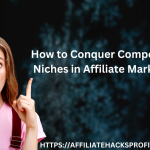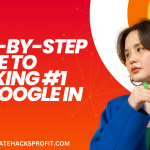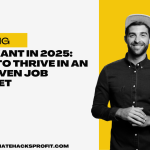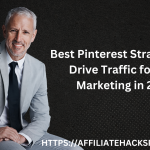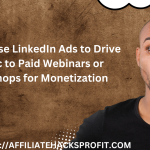Welcome to my article “Email Marketing Lead Generation: How to Turn Subscribers into Customers”. In the bustling digital marketplace, email marketing is akin to a secret weapon that, when wielded correctly, can transform your subscriber list into a goldmine of loyal customers. But let’s face it—simply having a horde of email subscribers is as useful as owning a treadmill that doubles as a clothes hanger. The real magic happens when those subscribers start engaging with your content, clicking on your offers, and ultimately, reaching for their wallets.
Turning subscribers into paying customers might sound like the plot of a marketing fairytale, but it’s entirely achievable with the right strategies. Think of it as a journey where your subscribers, initially drawn in by your charm (or irresistible lead magnet), need a little nurturing to develop a deep and lasting relationship with your brand. And just like in any relationship, the key ingredients are understanding, communication, and maybe a dash of humor to keep things interesting. In this article, we’ll explore the ins and outs of email marketing lead generation, sharing actionable tips that can help you transform those passive readers into enthusiastic buyers. So, buckle up and get ready to turn those inbox lurkers into your brand’s biggest fans!
Unlock the Proven Path to $100-$300 Daily – Watch This FREE Video and Start Now >>>

Understanding Your Audience
Imagine you’re at a party, trying to strike up a conversation with a room full of strangers. You wouldn’t launch into a detailed discussion about your latest knitting project with someone wearing a leather jacket and a “Heavy Metal Forever” tattoo, would you? The same principle applies to email marketing. Understanding your audience is crucial if you want to speak their language, grab their attention, and ultimately convert them into customers. Let’s dive into the art of getting to know your subscribers better than they know themselves.
Segmenting Your Email List
First things first: not all your subscribers are created equal. Segmenting your email list is like throwing multiple parties where everyone gets to hang out with people who share their interests. By dividing your list based on demographics, behavior, and purchase history, you can tailor your messages to hit all the right notes. Use tools like customer relationship management (CRM) systems and email marketing platforms to slice and dice your list into meaningful segments. This way, you can send your luxury skincare tips to the beauty enthusiasts and your budget travel hacks to the wanderlust crowd, ensuring each group gets content that resonates.
Personalizing Your Email Content
Now that you’ve got your segments sorted, it’s time to add a personal touch. Personalized content isn’t just about swapping in the recipient’s name like some digital game of Mad Libs. It’s about crafting messages that feel tailor-made for each reader. Think of it as the difference between a generic “Hey, you!” and a warm, specific greeting that makes someone feel seen and valued. Use dynamic content blocks to customize parts of your email based on the subscriber’s past interactions, preferences, and purchase behavior. Whether it’s recommending products they’ve shown interest in or sending birthday discounts, a little personalization goes a long way in building rapport and trust.
When you take the time to understand and segment your audience, you’re not just sending emails; you’re starting conversations. And with the right mix of data-driven insights and personalized touches, those conversations can lead to meaningful relationships and, yes, more sales. So, go ahead, get to know your subscribers like they’re the guests of honor at your digital soirée—they’ll appreciate the effort, and you’ll enjoy the results.
Crafting Compelling Email Content
Alright, you’ve successfully segmented your audience and understand them better than your favorite Netflix series. But how do you keep them glued to your emails like they’re binge-watching the latest season? The answer lies in crafting compelling email content that not only grabs attention but also drives action. Let’s break down the art of creating emails that your subscribers can’t wait to open.
Designing Engaging Email Bodies
Once you’ve got your subscribers to open the email, you need to keep them engaged. Designing an engaging email body is like setting up a cozy reading nook—they should want to settle in and stay awhile. Start with a strong opening line that hooks them in, followed by concise and compelling content. Break up text with eye-catching visuals, bullet points, and subheadings to make it easily digestible. Remember, most people are skimming, not reading every word, so make your key points stand out. Use storytelling to connect on an emotional level, and always include a clear and direct call to action (CTA). Whether it’s “Shop Now,” “Learn More,” or “Sign Up Today,” your CTA should be the cherry on top that guides them to the next step.
Incorporating Strong Calls to Action (CTA)
Speaking of CTAs, let’s talk about the art of the nudge. A strong CTA is like a friendly push that guides your subscribers towards the action you want them to take. It should be clear, compelling, and impossible to miss. Use action-oriented language that creates a sense of urgency or excitement. Placement is key, too—don’t bury your CTA at the bottom of a lengthy email. Instead, sprinkle it throughout your content in a way that feels natural. And for the love of conversion rates, make sure your CTA buttons stand out visually with contrasting colors and bold text.
Unlock the Proven Path to $100-$300 Daily – Watch This FREE Video and Start Now >>>
Crafting compelling email content is an art and a science. With attention-grabbing subject lines, engaging email bodies, and irresistible CTAs, you can transform your emails from digital junk mail to must-read content. Remember, your goal is to create a seamless journey for your subscribers, guiding them from curiosity to conversion with every email you send. So, go ahead, unleash your creativity, and watch your open rates, click-throughs, and sales soar.
Automation and Drip Campaigns
Picture this: You’re lounging on a tropical beach, sipping a piña colada, while your email marketing is working tirelessly back home, nurturing leads and converting subscribers into customers. Sounds like a dream, right? Welcome to the world of automation and drip campaigns, where you can set up smart, timely, and personalized email sequences that do the heavy lifting for you. Let’s dive into how you can harness these powerful tools to keep your marketing engine humming, even while you’re off enjoying some well-deserved R&R.
Setting Up Automated Email Sequences
Automation is like having a team of diligent marketing elves working around the clock, ensuring that your subscribers receive the right messages at the right times. To set up automated email sequences, start with a clear goal in mind: Are you welcoming new subscribers, nurturing leads, or re-engaging past customers? Use your email marketing platform to design workflows that trigger emails based on specific actions or events, such as signing up for your newsletter, abandoning a cart, or celebrating a birthday. Think of it as creating a choose-your-own-adventure story for your subscribers, guiding them along a path that feels personalized and responsive.
For example, an automated welcome series could start with a warm greeting, followed by a few emails that introduce your brand’s story, showcase your best products, and offer a special discount to encourage a first purchase. By setting these up in advance, you ensure every new subscriber gets the VIP treatment without lifting a finger.
Nurturing Leads with Drip Campaigns
Drip campaigns are the bread and butter of lead nurturing, allowing you to build relationships with your subscribers over time through a series of carefully spaced emails. Imagine a friendly drip of water steadily filling a glass—slow and steady wins the race. With drip campaigns, you can deliver valuable content, helpful tips, and gentle reminders that keep your brand top of mind without overwhelming your subscribers.
Consider a lead who has shown interest in your products but hasn’t made a purchase yet. A drip campaign can start with an educational email that highlights the benefits of your products, followed by a testimonial from a satisfied customer, and later a limited-time offer to create urgency. Each email in the sequence should build on the previous one, moving the lead closer to making a decision. The key is to provide value and build trust at every step, transforming hesitant leads into enthusiastic customers.
Automation and drip campaigns are your secret weapons in the quest for efficient, effective email marketing. By setting up smart sequences and nurturing your leads with thoughtful, well-timed content, you can turn your subscribers into customers while you focus on other aspects of your business—or just relax on that tropical beach. So, gear up, automate, and watch your email marketing efforts pay off like never before.
Analyzing and Optimizing Your Campaigns
So, you’ve crafted compelling emails, segmented your audience like a pro, and automated your way to a marketing paradise. But how do you know if all this effort is actually paying off? Welcome to the realm of analyzing and optimizing your email campaigns, where data is your best friend and continuous improvement is the name of the game. Let’s explore how you can turn raw numbers into actionable insights, ensuring your email marketing is always hitting the sweet spot.
Unlock the Proven Path to $100-$300 Daily – Watch This FREE Video and Start Now >>>
Tracking Key Metrics
First things first: you need to keep an eye on the right metrics. Think of these as the vital signs of your email campaigns, giving you a pulse on what’s working and what needs a little TLC. Key metrics to track include:
- Open Rates: This tells you how many subscribers are actually opening your emails. If your open rates are lower than your enthusiasm for Monday mornings, it’s time to revisit your subject lines and sender names.
- Click-Through Rates (CTR): This shows how many people clicked on links within your email. A high CTR indicates that your content is engaging and your CTAs are compelling. If it’s low, it might be time to spice up your email body or make your CTAs more irresistible.
- Conversion Rates: This is the holy grail of metrics, showing how many subscribers took the desired action, like making a purchase or signing up for a webinar. If your conversion rates are lagging, you may need to revisit your landing pages or offer more enticing deals.
- Bounce Rates: This indicates how many emails couldn’t be delivered. A high bounce rate can harm your sender reputation, so make sure to keep your email list clean and updated.
- Unsubscribe Rates: While it’s never fun to see people leave, this metric can provide valuable insights. If your unsubscribe rates spike after certain emails, it’s a clear sign that something in your content didn’t sit well with your audience.
A/B Testing and Iteration
Once you’ve got a handle on your metrics, it’s time to roll up your sleeves and start testing. A/B testing (or split testing) is like conducting a science experiment for your emails—except with fewer lab coats and more marketing magic. Test different elements of your emails to see what resonates best with your audience. Here’s what you can experiment with:
- Subject Lines: Test variations to see which ones get more opens. For example, does “Flash Sale: 50% Off Today Only” perform better than “Exclusive Discount Inside”?
- Email Content: Experiment with different styles, lengths, and tones. Are your subscribers more responsive to a casual, conversational tone or a more formal approach?
- CTAs: Try out different calls to action, such as “Shop Now,” “Learn More,” or “Get Your Free Trial.” See which wording and placement drive the most clicks.
- Send Times: Test sending your emails at different times of the day and on different days of the week to find out when your audience is most engaged.
Analyzing and optimizing your email campaigns isn’t a one-time task; it’s an ongoing journey. By regularly tracking key metrics, conducting A/B tests, and gathering feedback, you can ensure that your email marketing is always evolving and improving. So, put on your data detective hat, dive into those analytics, and tweak your way to email marketing success. After all, even the best campaigns can always get a little bit better.

Conclusion
Congratulations! You’ve navigated the exhilarating journey of email marketing lead generation, from understanding your audience to crafting irresistible content, automating like a pro, and fine-tuning your campaigns with the precision of a Swiss watchmaker. By now, you should be well-armed with strategies to turn your subscribers into loyal customers, and maybe even a few email marketing groupies.
As we wrap up, let’s recap the key points. First, understanding your audience is the cornerstone of effective email marketing. Without knowing who they are and what makes them tick, you’re essentially throwing darts in the dark. Segment your list, personalize your content, and make each subscriber feel like you’re speaking directly to them.
Analyzing and optimizing your campaigns ensures you’re always improving. Keep an eye on those vital metrics, test different elements to see what works best, and never stop iterating. Feedback from your audience is gold—listen to it, learn from it, and use it to make your emails even better.
Unlock the Proven Path to $100-$300 Daily – Watch This FREE Video and Start Now >>>
In the world of email marketing, there’s always room for improvement. Stay curious, stay creative, and keep refining your approach. By continually adapting and optimizing, you’ll not only turn subscribers into customers but also into raving fans who can’t wait to see what you send next.
So, go forth and conquer the inboxes of the world with your newfound email marketing prowess. May your open rates be high, your click-throughs plentiful, and your conversion rates through the roof. Happy emailing!
Thank you for reading my article “Email Marketing Lead Generation: How to Turn Subscribers into Customers” till the end. See you with another.


